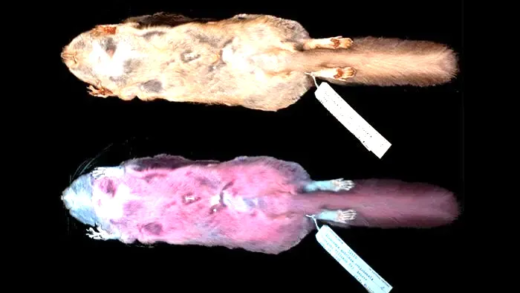The Salem witch trials were a complex interplay of fear, hysteria, and injustice, driven by key figures and societal tensions. This dark chapter in American history left profound impacts on individuals and the community, highlighting the consequences of scapegoating and moral panic. Lessons learned from these events continue to resonate today, emphasizing the importance of justice and critical thinking.
Key Figures of the Salem Witch Trials
The Salem witch trials were marked by a handful of key figures whose actions and decisions shaped the course of this dark chapter in American history. Among the most notable were:
- Reverend Samuel Parris: As the minister of Salem Village, Parris played a crucial role in igniting the witch hunt. His daughter and niece were among the first to exhibit strange behaviors, leading to accusations of witchcraft.
- Abigail Williams: A central accuser, Abigail was Parris’s niece. Her dramatic fits and accusations fueled the hysteria, making her one of the most infamous figures in the trials.
- Tituba: The first woman accused of witchcraft, Tituba was an enslaved woman in the Parris household. Her confession and tales of witchcraft captivated the community and added to the frenzy.
- Judge Samuel Sewall: One of the judges, Sewall later expressed remorse for his role in the trials, highlighting the moral complexities involved.
- Governer William Phips: His decision to establish the special court for witch trials significantly impacted the proceedings, as he supported the judges and the accusations.
These figures, among others, played pivotal roles in the Salem witch trials, either by accusing others, presiding over the trials, or being accused themselves. Their interactions and decisions created a perfect storm of fear and paranoia, leading to tragic consequences for many innocent individuals.
Causes of Witch Hysteria in Salem
The Salem witch hysteria was not a random event; it stemmed from a complex mix of social, political, and economic factors. Understanding these causes helps clarify why such a tragic episode unfolded.
- Religious Beliefs: The Puritan community in Salem was deeply religious, believing in the existence of the devil and witchcraft. This belief made them susceptible to accusations.
- Social Tensions: Salem Village was rife with social divisions and rivalries. Many accusations stemmed from personal grievances rather than actual evidence of witchcraft.
- Economic Struggles: Economic hardship and land disputes heightened tensions. People often blamed their misfortunes on others, leading to accusations of witchcraft as a scapegoat.
- Political Climate: The political instability of the time, including the aftermath of King William’s War, contributed to a sense of fear and uncertainty within the community.
These intertwined factors created a perfect storm, allowing fear to override reason. The Salem witch trials serve as a chilling reminder of how hysteria can arise in a community under stress.
Drugs and Substances in Salem
One intriguing aspect of the Salem witch trials is the potential influence of drugs and substances on the behaviors of the accused and the accusers. Some historians suggest that certain substances may have contributed to the bizarre actions reported during the trials.
- Ergot Fungus: Found in rye, ergot can cause hallucinations and convulsions. Some researchers speculate that contaminated grain could have led to the strange behaviors observed in the afflicted girls.
- Alcohol Consumption: High levels of alcohol consumption may have contributed to irrational behaviors and poor decision-making among community members.
While the direct impact of these substances is still debated, they represent an external factor that may have affected the community’s mindset. The idea that drugs could play a role in such a historical event highlights the complexities of human behavior under distress.
Consequences for the Accused
The consequences for those accused of witchcraft during the Salem trials were dire and often fatal. Many innocent individuals faced severe repercussions due to the hysteria that gripped the community.
- Executions: Nineteen people were hanged, and one man was pressed to death for refusing to plead. These executions were carried out based on flimsy evidence and mass hysteria.
- Imprisonment: Many accused individuals spent months in harsh prison conditions, often without trial, leading to deteriorating health and even death.
- Social Stigma: Survivors of the trials faced lasting social stigma. Families were torn apart, and reputations were irreparably damaged.
The Salem witch trials left a deep scar on the community, illustrating the devastating impact of paranoia and wrongful accusations. The fates of the accused remind us of the importance of justice and reason in society.
Impact on the Salem Community
The Salem witch trials had a profound impact on the community, disrupting relationships, eroding trust, and altering the overall spirit of Salem. The trials left scars that lingered long after the executions ended.
- Breach of Trust: Friends turned against friends, neighbors accused neighbors. This breakdown of trust created an atmosphere of fear and suspicion that permeated everyday interactions.
- Family Divisions: Families were torn apart as accusations led to betrayals. Some family members testified against each other, driven by fear or personal vendettas, causing lasting emotional damage.
- Community Spirit: The once tight-knit community of Salem became fractured. The shared values and sense of belonging were replaced by paranoia and division, leaving a legacy of bitterness.
- Long-term Effects: Even after the trials, the community struggled to heal. Many who survived faced social stigma, and the psychological toll of the trials affected generations.
The trials transformed Salem into a cautionary tale about the dangers of mass hysteria and its ability to dismantle social structures. The impact on the community serves as a stark reminder of the consequences of fear-driven actions.
Reflection of Social and Political Climate
The Salem witch trials reflected the tumultuous social and political climate of the time. This period was marked by uncertainty, fear, and a lack of stable governance.
- Political Instability: The aftermath of King William’s War had left the community vulnerable and anxious. The lack of strong leadership fueled fears that manifested in the witch trials.
- Social Hierarchies: The trials highlighted existing social tensions. Those with power often accused the less fortunate, reflecting underlying class struggles and resentment.
- Religious Zealotry: Puritan beliefs played a significant role in shaping the trials. The community’s strict religious views made them susceptible to interpreting misfortunes as signs of witchcraft.
- Disruption of Governance: The special court established for the trials bypassed traditional legal norms, leading to a breakdown in justice and fairness. This set a dangerous precedent for future governance.
The Salem witch trials thus served as a mirror to the societal tensions of the time, illustrating how fear and instability can lead to tragic outcomes. The historical context provides valuable insights into the dynamics of power, religion, and community.
Lessons from the Salem Witch Trials
The Salem witch trials offer significant lessons for modern society, emphasizing the importance of reason, justice, and critical thinking in the face of hysteria.
- Importance of Evidence: The trials demonstrate the dangers of acting on flimsy evidence and mass panic. Solid evidence and due process are essential for justice.
- Consequences of Hysteria: The trials remind us how quickly fear can escalate into chaos, leading to wrongful accusations and tragic outcomes. Vigilance against mass hysteria is crucial.
- Value of Community Trust: Rebuilding trust after such events is vital. Communities must work together to heal and restore relationships disrupted by fear and suspicion.
- Critical Thinking: Encouraging critical thought and skepticism toward sensational claims can prevent future witch hunts, whether literal or metaphorical.
By reflecting on the mistakes of the past, society can strive to foster environments where justice prevails over fear, ensuring that history does not repeat itself.
The Role of Religion in the Trials
Religion played a pivotal role in the Salem witch trials, shaping the events and influencing the beliefs of the community. The Puritan faith deeply intertwined with daily life created a fertile ground for accusations.
- Belief in the Devil: The Puritans’ strong belief in the devil made them particularly susceptible to accusations of witchcraft. They viewed misfortunes as evidence of satanic influence.
- Religious Authority: The influence of religious leaders like Reverend Samuel Parris cannot be understated. Their interpretations of scripture often fueled paranoia and accusations.
- Moral Superiority: Puritan ideology emphasized a moral high ground, which led to a mindset that justified persecution of those deemed sinful or different.
- Community Identity: The trials became a way to reinforce community identity through shared beliefs, even at the cost of innocent lives.
The role of religion in the Salem witch trials underscores the powerful impact of faith on societal actions and beliefs. It serves as a reminder of the potential consequences when religious fervor overrides compassion and reason.
Personal Accounts from the Salem Witch Trials
Salem witch trials are not just about historical facts; they are filled with human stories that highlight the emotional and personal turmoil experienced by individuals caught in the hysteria. First-hand accounts reveal the desperation and fear that many faced during this dark period.
- John Proctor: One of the most notable figures accused of witchcraft, Proctor openly challenged the court, declaring, “I am no witch.” His defiance ultimately led to his execution, but his story has become emblematic of the struggle against injustice.
- Rebecca Nurse: A respected member of the community, Nurse’s trial shocked many. Her calm demeanor and moral integrity drew support from neighbors, yet she was still convicted and executed, illustrating how even the most virtuous could fall prey to the madness.
- Mary Warren: Initially one of the accusers, Warren later recanted her accusations, revealing the pressure and fear that drove her actions. Her change of heart reflects the internal conflict many faced as the trials progressed.
These personal narratives not only humanize the historical events but also serve as poignant reminders of the consequences of mass hysteria. They evoke empathy and underscore the importance of justice and moral courage in the face of overwhelming fear.
Modern Parallels to Witch Hunts
The Salem witch trials resonate deeply today, reflecting the cyclical nature of scapegoating and moral panics in society. Contemporary issues mirror the trials in various ways, highlighting the dangers of irrational fear and prejudice.
- Scapegoating: Just as the accused in Salem were blamed for societal problems, modern societies often target specific groups during crises, leading to discrimination and violence. For instance, immigrants or minority groups are sometimes unjustly blamed for economic downturns or social unrest.
- Moral Panics: Much like the fear of witchcraft, current issues such as drug use or crime can provoke moral panics, where society overreacts, leading to unjust laws and practices. The media often sensationalizes these issues, fueling public fear.
- Social Media Influence: In today’s digital age, social media can amplify accusations and spread misinformation quickly, much like the rumors that fueled the Salem trials. This can lead to real-life consequences for individuals accused of various wrongdoings.
Recognizing these parallels helps society learn from the past. It encourages vigilance against the spread of fear-driven narratives that can lead to unjust treatment of individuals or groups.
Long-Term Impact of the Salem Witch Trials
The legacy of the Salem witch trials extends far beyond their immediate consequences, influencing legal practices and societal norms in the years that followed. Understanding these impacts sheds light on how history shapes contemporary justice systems.
- Legal Reforms: The trials prompted a reevaluation of legal standards in America. The need for evidence-based trials became clear, leading to reforms that emphasized due process and the rights of the accused.
- Public Discourse: The trials sparked discussions about morality, justice, and the role of government in personal lives. This dialogue influenced Enlightenment thinkers and contributed to the development of modern democratic principles.
- Psychological Legacy: The fear and paranoia from the trials left a lasting psychological impact on the community. Generations later, the stigma surrounding those accused of witchcraft continued to affect families and relationships.
In summary, the Salem witch trials serve as a cautionary tale about the consequences of fear-driven actions. They underscore the importance of justice, rational thought, and community trust in preventing history from repeating itself.





Comments are closed.